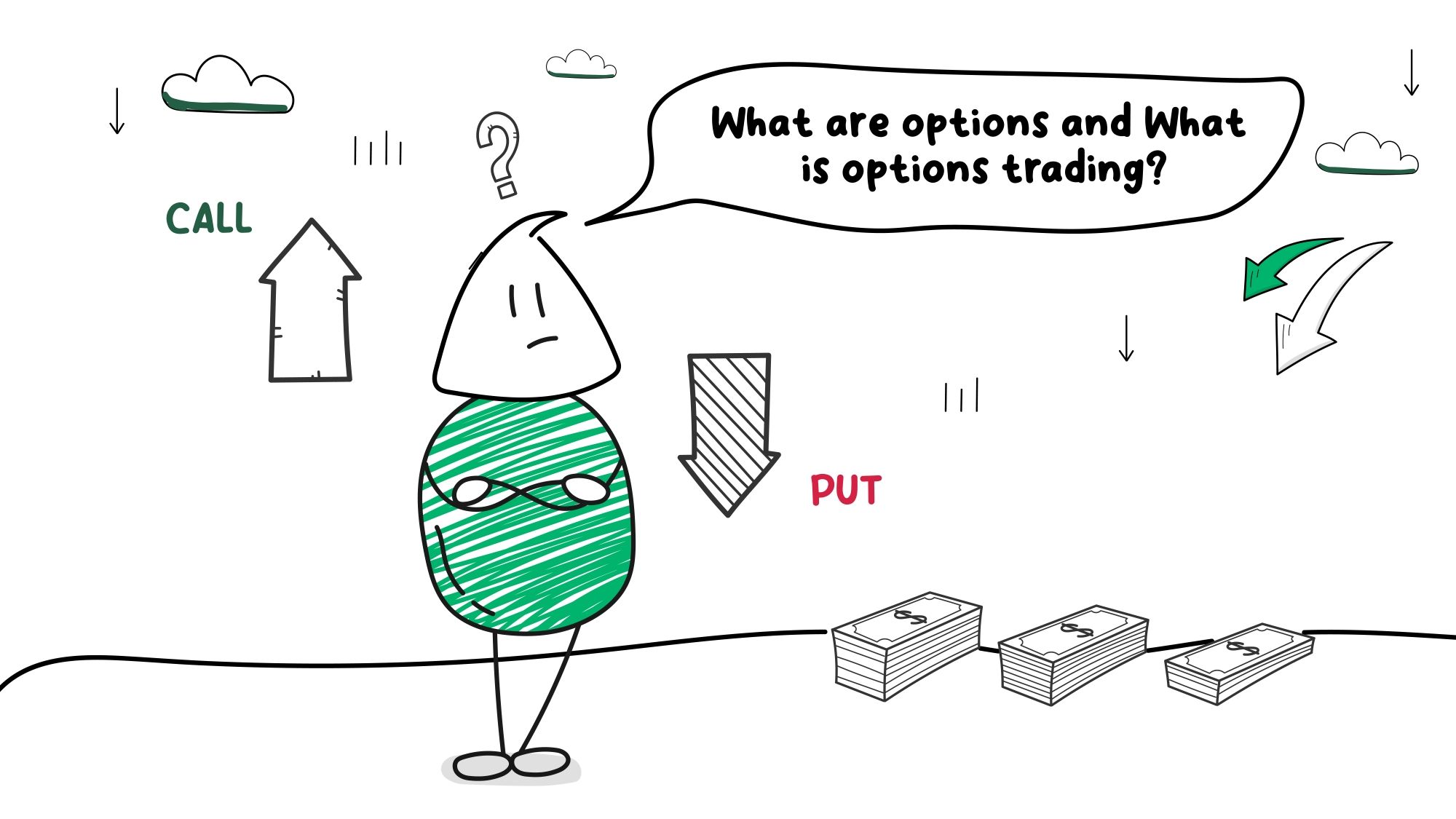What are Options and What is Options trading?

Options trading is a popular method of investing that has gained popularity in recent years. It is an advanced form of trading that involves buying and selling options contracts, which provide the right, but not the obligation, to buy or sell an underlying asset at a predetermined price at a specific time. This article will explore the basics of options and options trading, including the benefits and risks involved, as well as some examples of how options trading can be used in practice.
What Are Options?
An option is a contract that gives the buyer the right, but not the obligation, to buy or sell an underlying asset at a specific price and time. The underlying asset can be anything from stocks, commodities, currencies, or even cryptocurrencies. The price at which the option can be exercised is known as the strike price, while the date on which the option expires is called the expiration date.
There are two types of options - call option and put option. A call option gives the buyer the right to buy the underlying asset at the strike price, while a put option gives the buyer the right to sell the underlying asset at the strike price. The buyer of an option pays a premium to the seller for the right to exercise the option.
Options Trading
Options trading involves buying and selling options contracts on the stock market. Options trading can be used to generate income or as a hedge against market fluctuations. Options trading requires a good understanding of the market and the underlying asset, as well as a knowledge of the various trading strategies that can be used.
Types of Options:
There are two main types of options: call options and put options.
- Call Options: A call option gives the holder the right, but not the obligation, to buy an underlying asset at a specified price (strike price) within a specified time period. If the underlying asset's price goes up, the call option holder can buy the asset at the lower strike price and sell it at a higher market price, making a profit.
- Put Options: A put option gives the holder the right, but not the obligation, to sell an underlying asset at a specified price (strike price) within a specified time period. If the underlying asset's price goes down, the put option holder can sell the asset at the higher strike price and buy it back at a lower market price, making a profit.
Both call and put options can be used for speculation, hedging, or income generation, depending on the trader's strategy and goals.
Let’s understand this with a real-life example:
Let's say that you believe that the shares of a particular company, XYZ, will increase in value over the next few months. You could buy XYZ shares outright, but that requires a significant amount of capital. Alternatively, you could buy a call option on XYZ shares.
A call option gives you the right, but not the obligation, to buy XYZ shares at a predetermined price (the strike price) before a specified expiration date. You pay a premium to the option seller for this right. Let's say that the current price of XYZ shares is $100, and you buy a call option with a strike price of $110 and an expiration date three months from now. You pay a premium of $5 per share for this option, which represents a total cost of $500 (100 shares x $5 per share).
Now, there are three possible outcomes for this trade:
- If the price of XYZ shares increases to $120 before the expiration date, you could exercise your option and buy 100 shares of XYZ at the strike price of $110. You could then sell those shares at the market price of $120, making a profit of $1,000 ($120 - $110 x 100 shares), minus the premium you paid for the option ($500). So your net profit would be $500.
- If the price of XYZ shares remains below $110, your option will expire worthless, and you will lose the premium you paid for the option ($500).
- If the price of XYZ shares increases, but not enough to exceed the strike price of $110, you could still sell your option to another trader before the expiration date. If the price of the option has increased, you could make a profit by selling it for more than you paid for it. However, if the price of the option has decreased, you could lose money by selling it for less than you paid for it.
This is just one example of how options trading can be used to profit from changes in the stock market. However, it's important to note that options trading can be risky and should only be undertaken by experienced traders with a good understanding of the market.
Benefits of Options Trading
One of the primary benefits of options trading is the ability to leverage capital. With options, traders can control a large amount of an underlying asset with only a fraction of the cost. This can lead to significant profits if the trade goes in the trader's favor.
Another advantage of options trading is the ability to generate income. Traders can sell options contracts and collect premiums, which can provide a steady income stream. Additionally, options trading can be used as a hedging strategy to protect against market fluctuations.
Risks of Options Trading
Options trading involves a significant amount of risk, which is why it is important to have a good understanding of the market and the underlying asset. Options trading is inherently speculative, and traders can lose their entire investment if the trade goes against them. Additionally, options trading can be complex and require a great deal of knowledge and experience to be successful.
Popular Options Trading Strategies
Here are brief explanations of several popular options trading strategies:
- Covered call: A strategy where the investor holds a long position in an asset and sells a call option on that same asset. The goal is to earn income from the sale of the call option while also limiting potential losses if the asset price drops.
- Protective put: A strategy where the investor buys a put option on an asset they own in order to limit potential losses if the asset price drops.
- Bull call spread: A strategy where the investor buys a call option with a lower strike price and sells a call option with a higher strike price, with the goal of profiting from a moderate increase in the asset price.
- Bear put spread: A strategy where the investor buys a put option with a higher strike price and sells a put option with a lower strike price, with the goal of profiting from a moderate decrease in the asset price.
- Long straddle: A strategy where the investor buys a call option and a put option with the same strike price and expiration date, with the goal of profiting from a large move in the asset price in either direction.
- Iron Butterfly: A strategy where the investor combines a bull call spread and a bear put spread, with the goal of profiting from a narrow range of movement in the asset price.
- Calendar spread: A strategy where the investor buys a longer-term option and sells a shorter-term option with the same strike price, with the goal of profiting from the time decay of the shorter-term option.
Each of these options trading strategies has its own advantages and risks and may be more appropriate for certain market conditions or investor goals. By understanding the basics of these strategies, you can begin to develop your own options trading approach and build a diversified portfolio.
Conclusion
Options trading can be a powerful tool for generating income and hedging against market fluctuations. However, it is important to have a good understanding of the market and the underlying asset, as well as the various trading strategies that can be used. Options trading involves a significant amount of risk and should only be undertaken by experienced traders with a good understanding of the market.
Learn Option series next reads:



